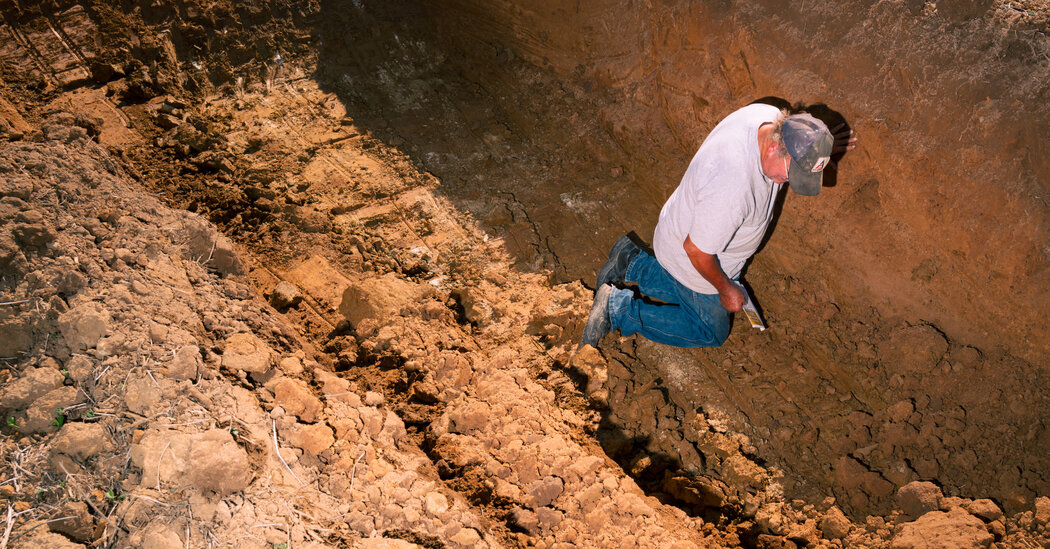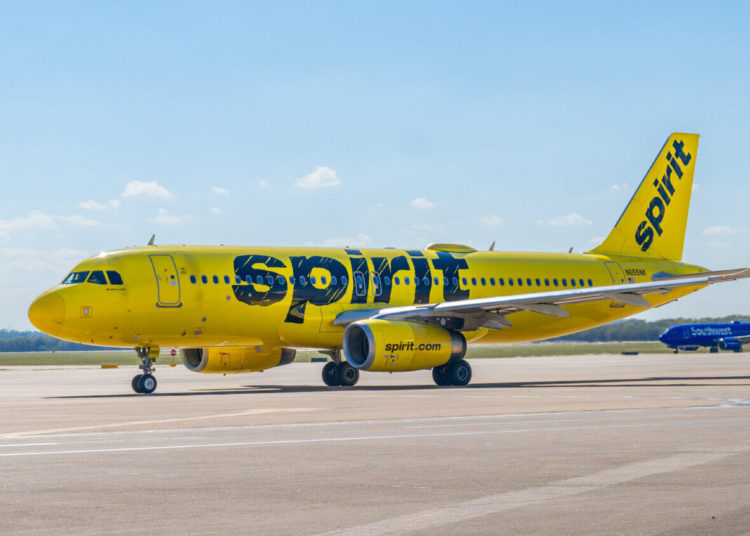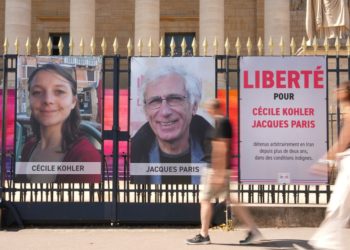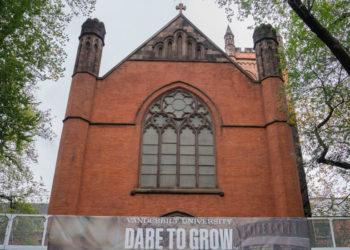On either Jan. 22 or 23 of 1865, about 80 soldiers from Company E of the Fifth U.S. Colored Cavalry set out from Camp Nelson, Ky., to Louisville with 900 head of cattle. They had been enslaved until recently; now they were fighting for the Union as free men.
Forty men walked in front of the herd and 40 walked behind. On Jan. 25, as the rear guard was passing through a wooded section along the Shelbyville Road (now Highway 60), about 25 miles east of Louisville, they were ambushed by Confederate guerrillas, or bushwhackers.
“The guerrillas would have had pistols, and the African American soldiers would have had single-shot Enfield rifles,” said Amy Murrell Taylor, a historian at the University of Kentucky. The cows were noisy enough to muffle the sound of battle for soldiers in front, who didn’t know their comrades were being slaughtered. Twenty-two men were killed, but the raid achieved no military objective. “It’s just an expression of pure hatred,” Dr. Taylor said. The free Black men “represented everything they were fighting against.”
What came to be known as the Simpsonville Massacre made only passing news at the time. “It was a horrible butchery, yet the scoundrels engaged in the bloody work shot down their victims with feelings of delight,” The Louisville Journal reported the next day. The soldiers were buried by locals (and their enslaved workers) in one or more likely two mass graves, near the site where they had been killed.
After the war, military officials began exhuming bodies at battlefields and other sites and giving them a proper burial. They never visited Simpsonville. “It was just forgotten,” said Philip B. Mink II, director of the Office of State Archaeology and the William S. Webb Museum of Anthropology at the University of Kentucky.
The Simpsonville Massacre survived as informal history in the local Black and military communities, a poignant symbol of unrecognized sacrifices. Nobody with institutional power seemed interested in discovering where those two mass graves were.
But a few years ago, the search for remains from the Simpsonville Massacre suddenly picked up. In the spring of 2024, Dr. Mink homed in with confidence on two humps on a soybean field owned by Jacob T. Bryan, 69. The field, part of a larger farm, is on the north side of Highway 60, which traces the same path as the Shelbyville Road.
The Bryan family, which once owned slaves, has been farming here for six generations. Mr. Bryan said he remembered his grandfather telling him, before his death in 1964, that the two hillocks were the Black soldiers’ graves. “I wish I’d asked questions,” Mr. Bryan said in an interview last spring. “Now, I can’t. There’s nobody to ask.” He said he was glad he had not sold to a developer, as many of his neighbors had. History had not been paved over with a parking lot.
Dr. Mink analyzed the field with drone-attached and terrestrial ground-penetrating radar, as well as a magnetometer, which can detect metal. The resulting radar images showed bright red bands, irregularities in the soil. Dr. Mink thought he had “a compelling case for the likely location of the mass grave.” By now, it was early 2025. Dr. Mink would wait to dig until Mr. Bryan harvested the soybeans in September.
The dig begins
September arrived, and so did a backhoe from Bryant Concrete and Excavating. The machine was manned by two workers, one of them a relative of Mr. Bryan. The morning was hot, summer refusing to give way to fall. Scientists and students from the University of Kentucky gathered at the edge of Mr. Bryan’s field, a muddy expanse now shorn of its crop.
“This is a huge thing,” said Brittany Thompson, a doctoral student at the University of Kentucky with an expertise in Black archaeology.
First, the men had to be found. The archaeologists put on helmets. They watched as the backhoe dug a shallow trench, about the size of an inflatable pool, along the fence line of Mr. Bryan’s property. The soil was deep brown; graves tend to show up as discolorations.
Based on the results of a long-ago exhumation at Mr. Bryan’s family graveyard, conducted when the highway was being built almost a century ago, the archaeologists expected that most skeletons of the Black soldiers would have already decomposed. But teeth contain resilient minerals that allow them to last longer than bones. Metal objects, such as uniform buttons or belt buckles, could also indicate evidence of burial.
There was nothing in the first trench, just brown soil and white rock. But nobody had expected success right away. So the backhoe moved away from the fence line, deeper into Mr. Bryan’s field, and began to dig another trench.
Jerry T. Miller walked the field with the confidence of a commanding general. Mr. Miller, 73, is a white Republican who served on Louisville’s Metro Council and in Kentucky’s state Legislature. In 2006, he was researching his own ancestry when he came upon a mention of the Simpsonville Massacre in the diary of Julia A. Tevis, the influential Kentucky educator. Since then, Mr. Miller has dedicated himself to commemorating Simpsonville.
Kentucky was a neutral border state where slavery was legal, but it eventually sided with the Union. “Enlistment was a form of self emancipation for enslaved Black men,” said Brent Leggs, a Kentucky native who runs the African American Cultural Heritage Action Fund, which is part of the National Trust for Historic Preservation.
Confederate resistance in Kentucky was strong but disorganized. “Guerrilla warfare tended to break out in places that were politically controlled by the Union but with a significant Confederate-sympathizing population,” Dr. Taylor said.
An initial search, in 2008, focused on the Lincoln Ridge cemetery, a Black graveyard that sits in a thickly wooded area along Highway 60, next to the historical site where the civil rights leader Whitney M. Young Jr. was born. It is across the road from the location identified much later on Mr. Bryan’s farm, and about 500 yards to the southwest. Dr. Mink hopes the neglected cemetery will eventually be restored.
Revisiting Lincoln Ridge earlier this year, Dr. Mink warned of poison ivy as he walked between toppled gravestones. One, half-sunk into the ground, read “Miller M. Marshall.” Another, a pillar, identified “Angie,” born 1856, died 1914. The graveyard was formed around the end of the Civil War, which made it a logical place to have buried the 22 soldiers killed down the road. “We did geophysics” during that initial exploration, Dr. Mink said, but found no mass graves.
‘Honoring our own’
Mr. Miller kept pushing. He raised $3,000, which he used to have the Kentucky Historical Society install a roadside marker in 2009. In 2010, the Department of Veterans Affairs sent him 22 memorial marble stones, identical to those at Arlington National Cemetery. With the help of a Black motorcycle club, Mr. Miller created a roadside memorial: The white marble headstones were set in two neat rows on a rectangle covered with pebbles and demarcated with wooden beams.
It wasn’t the site of the massacre, Mr. Miller knew, but something had to be done somewhere. “We can’t undo the injustices suffered by the 23,702 enslaved Kentuckians who volunteered with the U.S. Colored Troops to gain their freedom,” Mr. Miller said. “We can ensure that the men of the Fifth U.S.C.C. who were slaughtered at Simpsonville are appropriately remembered.”
For the first time, the names of the Black soldiers who died at Simpsonville were given the recognition they deserved: Henry Harrison, Shelby Phelps, Lewis Jones. … But that only made finding their remains more urgent to those involved. The memorial highlighted its own incompleteness.
Charles Blatcher III, who heads the National Coalition of Black Veteran Organizations, said it was “extremely important” that the Simpsonville soldiers receive their due. A Vietnam War veteran who served in the Navy, Mr. Blatcher remembers how some of his white shipmates cheered when the Rev. Dr. Martin Luther King Jr. was assassinated.
“This administration seems to be going out of its way to disrespect minority Americans, let alone Black veterans,” he said. “It makes it incumbent on us to pick up the responsibility of honoring our own.”
Wanting to tell a more upbeat version of American history, President Trump ordered the National Park Service to remove materials at some sites related to Black history. The Department of Defense is restoring Confederate symbols.
That made Ms. Thompson, the young archaeologist, anxious. It was one thing to find the men, quite another to commemorate them. “I’m concerned their sacrifice will not be appreciated,” she said.
But just to get here, to this barren field on a hot day, had been an achievement more than a decade in the making.
In late 2015, a historian working with Mr. Miller unearthed a 1936 surveyor’s map, created at the time that the Shelbyville Road was being turned into Highway 60. On property identified as belonging to Ella and J.H. Bryan, four words were written: “Civil War Grave Mound.”
M. Jay Stottman, of the Kentucky Archaeological Survey, came out to take soil samples, which yielded nothing. Mr. Miller had recently been elected to the state Legislature. “I had other things I was focusing on,” he said. The search went dormant until 2023, when, newly retired from politics, he asked Dr. Mink to take a closer look at Mr. Bryan’s field.
Now the backhoe was digging exactly where the map marked the grave. But the second trench did not yield anything, and neither did a third, other than a single brick fragment that most likely came from a kiln on the Bryan farm. Whenever metal struck rock, the backhoe’s toothed bucket would pry the huge stones loose, lifting and depositing them on the edge of the pit.
“They’ve got to be somewhere,” Dr. Mink said, remaining remarkably upbeat. Students nudged clumps of soil with their feet, looking for something that could have survived more than 150 years of decomposition. Others went to sit in the shade of a farmhouse. A few stood at the edge of each new trench, hoping for some shard to salvage the search. But nothing materialized.
“While archaeology is not a hard science like physics or chemistry, it follows the same scientific method — develop a hypothesis, test it and evaluate the results,” Dr. Mink said. “In this case, the hypothesis was well supported but ultimately not correct, which is simply part of the process of science.”
Brian Mabeltini, the assistant state archaeologist, concurred: “Negative data is still data.” Maybe they needed to give the Lincoln Ridge cemetery another look, Dr. Mink suggested. He also wants to go over Mr. Bryan’s field again with both aerial and terrestrial ground-penetrating radar and bring in cadaver-sniffing dogs.
“It’s important to keep going,” Dr. Mink said. “These are young men who signed up, served their country, were fighting for freedom. I don’t want to give up yet.”
The post In Search of the Simpsonville Massacre appeared first on New York Times.




